I am working on a Panography / Panorama application in OpenCV and I've run into a problem I really can't figure out. For an idea of what a panorama photograph looks like, have a look here at the Panography Wikipedia article: http://en.wikipedia.org/wiki/Panography
So far, I can take multiple images, and stitch them together while making any image I like a reference image; here's a little taster of what I mean.

However, as you can see - it has a lot of issues. The primary one I am facing is that the images are getting cut (re: far right image, top of images). To highlight why this is happening, I'll draw the points that have been matched, and draw lines for where the transformation will end up:

Where the left image is the reference image, and the right image is the image after it's been translated (original below) - I have drawn the green lines to highlight the image. The image has the following corner points:
TL: [234.759, -117.696]
TR: [852.226, -38.9487]
BR: [764.368, 374.84]
BL: [176.381, 259.953]
So the main problem I have is that after the perspective has been changed the image:

Suffers losses like so:

Now enough images, some code.
I'm using a cv::SurfFeatureDetector, cv::SurfDescriptorExtractor and cv::FlannBasedMatcher to get all of those points, and I calculate the matches and more importantly good matches by doing the following:
/* calculate the matches */
for(int i = 0; i < descriptors_thisImage.rows; i++) {
double dist = matches[i].distance;
if(dist < min_dist) min_dist = dist;
if(dist > max_dist) max_dist = dist;
}
/* calculate the good matches */
for(int i = 0; i < descriptors_thisImage.rows; i++) {
if(matches[i].distance < 3*min_dist) {
good_matches.push_back(matches[i]);
}
}
This is pretty standard, and to do this I followed the tutorial found here: http://opencv.itseez.com/trunk/doc/tutorials/features2d/feature_homography/feature_homography.html
To copy images atop of one another, I use the following method (where img1 and img2 are std::vector< cv::Point2f >)
/* set the keypoints from the good matches */
for( int i = 0; i < good_matches.size(); i++ ) {
img1.push_back( keypoints_thisImage[ good_matches[i].queryIdx ].pt );
img2.push_back( keypoints_referenceImage[ good_matches[i].trainIdx ].pt );
}
/* calculate the homography */
cv::Mat H = cv::findHomography(cv::Mat(img1), cv::Mat(img2), CV_RANSAC);
/* warp the image */
cv::warpPerspective(thisImage, thisTransformed, H, cv::Size(thisImage.cols * 2, thisImage.rows * 2), cv::INTER_CUBIC );
/* place the contents of thisImage in gsThisImage */
thisImage.copyTo(gsThisImage);
/* set the values of gsThisImage to 255 */
for(int i = 0; i < gsThisImage.rows; i++) {
cv::Vec3b *p = gsThisImage.ptr<cv::Vec3b>(i);
for(int j = 0; j < gsThisImage.cols; j++) {
for( int grb=0; grb < 3; grb++ ) {
p[j][grb] = cv::saturate_cast<uchar>( 255.0f );
}
}
}
/* convert the colour to greyscale */
cv::cvtColor(gsThisImage, gsThisImage, CV_BGR2GRAY);
/* warp the greyscale image to create an image mask */
cv::warpPerspective(gsThisImage, thisMask, H, cv::Size(thisImage.cols * 2, thisImage.rows * 2), cv::INTER_CUBIC );
/* stitch the transformed image to the reference image */
thisTransformed.copyTo(referenceImage, thisMask);
So, I have the coordinates of where the warped image is going to end up, I have the points that create the homogeneous matrix that's used for these transformations - but I can't figure out how I should go about translating these images so they can't get cut up. Any help or pointers are very appreciated!